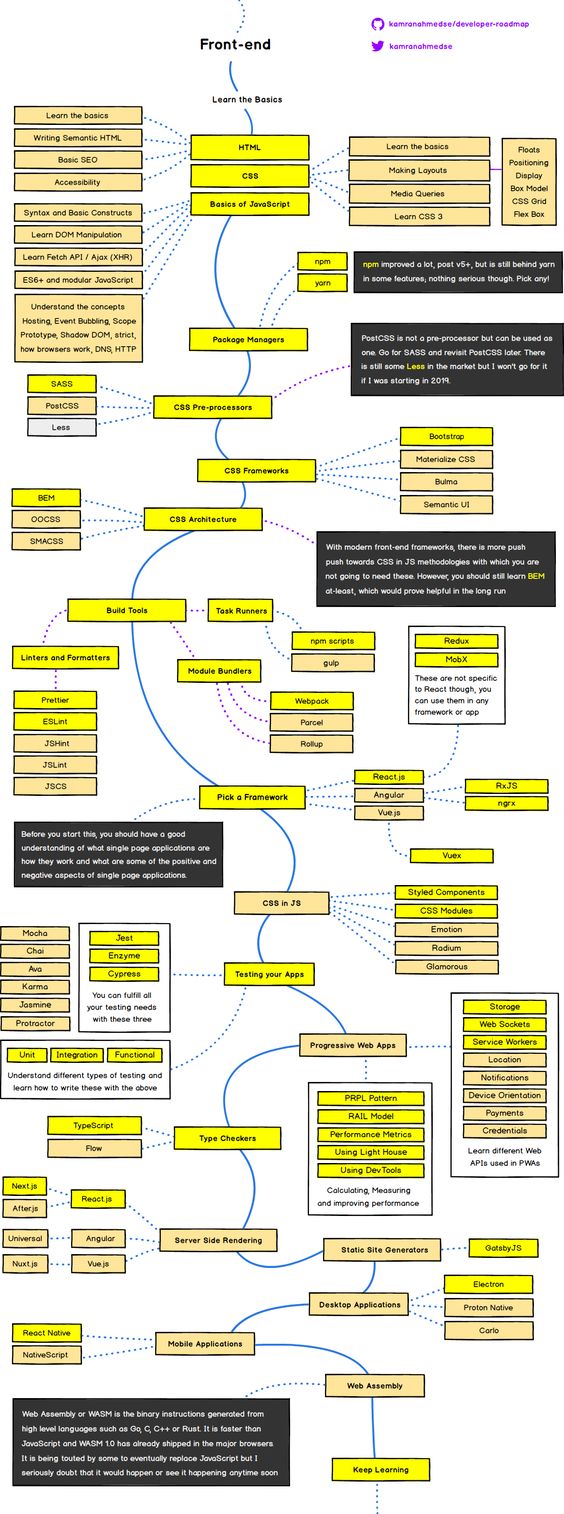Front End Development is the practice of creating user interfaces for websites and web applications. Front End Developers are responsible for the design, development, and implementation of the user interface components that users interact with. Here’s a roadmap to help you become a successful Front End Developer:
1 Learn HTML, CSS, and JavaScript:
The first step in becoming a Front End Developer is to learn the basics of HTML, CSS, and JavaScript. HTML is the markup language used to structure web pages, while CSS is used for styling and layout. JavaScript is used to add interactivity and dynamic functionality to web pages. You need to learn the syntax and best practices of these three languages to be able to build user interfaces.
We Recommend the following FREE Courses:
Creating a Multi Page App using HTML & CSS
Design Restaurant Menu Website using HTML & CSS
Build a Stopwatch using JavaScript
2 Learn Responsive Web Design:
Responsive Web Design is the practice of creating web pages that can adapt to different screen sizes and devices. You need to learn the principles of responsive design and how to use CSS frameworks like Bootstrap and Foundation to create responsive web pages. This will help you create user interfaces that are optimized for different devices and screen sizes.
We Recommend the following FREE Courses:
Responsive Website Development and Design
Responsive Web Design
3 Learn Front End Frameworks:
Front End Frameworks like Angular, React, and Vue.js are used to build complex user interfaces and web applications. You need to learn how to use these frameworks and their associated tools and libraries to create scalable and maintainable web applications. This will help you build more advanced and sophisticated user interfaces.
We Recommend the following FREE Courses:
Build CSS3 Flexbox Holy Grail Layout in Angular
Build a World Encyclopedia with AngularJS
Build Your Portfolio Website with Angular JS
4 Learn Version Control:
Version Control is the practice of managing changes to code over time. You need to learn how to use Version Control tools like Git to manage your codebase and collaborate with other developers. This will help you keep track of changes to your code and ensure that you are working on the latest version of the codebase.
We Recommend the following FREE Courses:
Version Control in node.js
Version Control of a Python Project using Git
5 Learn Build Tools:
Build Tools like Grunt and Gulp are used to automate repetitive tasks in the Front End development process. You need to learn how to use these tools to streamline your development workflow and improve your productivity. This will help you create more efficient and effective Front End development processes.
6 Learn Testing:
Testing is an important part of the Front End development process. You need to learn how to write and run tests for your code to ensure that it is working as expected. This will help you catch and fix bugs before they become a problem for your users.
7 Learn Web Performance Optimization:
Web Performance Optimization is the practice of optimizing web pages to improve their speed and performance. You need to learn how to use tools like Google PageSpeed Insights and YSlow to measure and optimize the performance of your web pages. This will help you create faster and more responsive user interfaces.
8 Stay Up-to-Date with the Latest Trends and Technologies:
Front End development is a fast-paced field, and new trends and technologies are emerging all the time. You need to stay up-to-date with the latest developments in the field by attending conferences, reading blogs, and participating in online forums. This will help you stay competitive and continue to improve your skills and knowledge.
In conclusion, becoming a successful Front End Developer requires learning HTML, CSS, and JavaScript, mastering Responsive Web Design, Front End Frameworks, Version Control, Build Tools, Testing, Web Performance Optimization, and staying up-to-date with the latest trends and technologies. By following this roadmap, you can build effective and efficient user interfaces and web applications.


